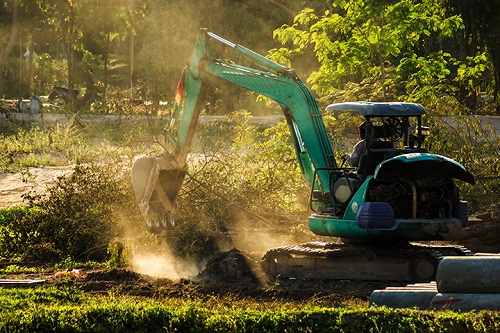Mini Excavators Market
The mini excavators market was valued at $7.23 billion in 2017 and is expected to reach $9.77 billion by 2025, registering a CAGR of 4.4% from 2018 to 2025. The construction segment dominated the market, accounting for more than one-third of the total revenue.
Mini excavators are a compact and robust type of construction equipment, with significant scope of application across different end-users. The advancement of technology and engineering capabilities has increased their performance and has provided alternatives to heavier construction equipment. Moreover, the growing popularity of compact construction equipment is expected to provide profitable business opportunities for the market. In addition, the significant number of ongoing construction and infrastructure development projects is also projected to fuel the demand for mini excavators.
Mini excavators find applications across different end-users, such as landscaping, demolishing, picking, excavating, and so on.
The Asia-Pacific region accounted for the major market share due to rapid urbanization and infrastructure development projects. As a result, the Asia-Pacific region is expected to maintain its leading market share during the forecast period with a growth rate of 4.9% from 2018 to 2015.
Europe and North America together accounted for more than half of the mini excavators, due to the popularity of compact and robust construction equipment.
The major players in the global mini excavators market have been focusing on new product development and business expansion strategies to gain a strong foothold in the market. The key players include AB Volvo, Caterpillar, Inc., ukurova Ziraat, Deere & Company, Hitachi, Ltd., Hyundai Construction Equipment, Co., Ltd., J C Bamford Excavators, Ltd., Kobe Steel, Ltd., Komatsu, Ltd., and Takeuchi Mfg. Co., Ltd.
[edit] Related articles on Designing Buildings Wiki
- Bituminous mixing and laying plant.
- Compact construction equipment.
- Compressed air plant.
- Concreting plant.
- Construction plant.
- Construction tools.
- Crane supports.
- Crane regulations.
- Earth-moving plant.
- Excavating plant.
- Forklift truck.
- Hoists.
- How to manage construction plant.
- Lifting devices.
- Piling equipment.
- Plant acquisition.
- Power float.
- Pumps and dewatering equipment.
- Rubble chute.
- Scaffolding.
- Tremie.
- Types of crane.
Featured articles and news
RTPI leader to become new CIOB Chief Executive Officer
Dr Victoria Hills MRTPI, FICE to take over after Caroline Gumble’s departure.
Social and affordable housing, a long term plan for delivery
The “Delivering a Decade of Renewal for Social and Affordable Housing” strategy sets out future path.
A change to adoptive architecture
Effects of global weather warming on architectural detailing, material choice and human interaction.
The proposed publicly owned and backed subsidiary of Homes England, to facilitate new homes.
How big is the problem and what can we do to mitigate the effects?
Overheating guidance and tools for building designers
A number of cool guides to help with the heat.
The UK's Modern Industrial Strategy: A 10 year plan
Previous consultation criticism, current key elements and general support with some persisting reservations.
Building Safety Regulator reforms
New roles, new staff and a new fast track service pave the way for a single construction regulator.
Architectural Technologist CPDs and Communications
CIAT CPD… and how you can do it!
Cooling centres and cool spaces
Managing extreme heat in cities by directing the public to places for heat stress relief and water sources.
Winter gardens: A brief history and warm variations
Extending the season with glass in different forms and terms.
Restoring Great Yarmouth's Winter Gardens
Transforming one of the least sustainable constructions imaginable.
Construction Skills Mission Board launch sector drive
Newly formed government and industry collaboration set strategy for recruiting an additional 100,000 construction workers a year.
New Architects Code comes into effect in September 2025
ARB Architects Code of Conduct and Practice available with ongoing consultation regarding guidance.
Welsh Skills Body (Medr) launches ambitious plan
The new skills body brings together funding and regulation of tertiary education and research for the devolved nation.
Paul Gandy FCIOB announced as next CIOB President
Former Tilbury Douglas CEO takes helm.
UK Infrastructure: A 10 Year Strategy. In brief with reactions
With the National Infrastructure and Service Transformation Authority (NISTA).























